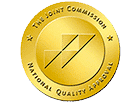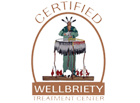Substance Use Disorder Treatment
A substance use disorder can include a variety of unhealthy behaviors including addiction, excessive substance usage, and dangerous or reckless substance-induced behavior.
Due to the incessant nature of addiction, people often lose control of their substance abuse. As a result, problems at home, work, or school are almost always a sign that substances have become a problem for someone.
To lessen the negative impacts of drugs and alcohol, it is important to seek substance use disorder treatment in a quality rehab facility to regain control of your life.

For more information about recovering from substance use disorders, please visit our page The Economic Cost of Substance Abuse.
What is a Substance Use Disorder?
Substance use disorder (SUD) is a mental disorder in which the use of one or more substances leads to significant impairment or distress. The effects of substance use disorder manifest in mental, physical, and behavioral symptoms that cause serious, and often deadly problems in one’s life. If an individual abuses multiple substances quite consistently, they also have a poly-substance use disorder.
Substance Use Disorder Symptoms
Substance use disorders affect physical and mental health, as well as an individual’s behavior(s).
The signs and symptoms of a substance use disorder include:
Physical Signs
- Abscesses
- Consistent scratching
- Excessive sweating
- Insomnia (inability to sleep)
- Labored breathing
- Lack of coordination
- Decrease in physical activity
- Loss of appetite or change in eating habits
- Nausea/vomiting
- Needle marks
- Poor hygiene
- Rapid weight loss
- Runny nose
- Strange body odor
- Slurred speech
- Shakey hands
- Tremors
- Watery eyes
Emotional Signs
- Confusion
- Closed-Off
- Defensive
- Delirious
- Easily agitated
- Emotional outbursts
- Excessive anger
- Forgetful
- Fragile ego
- Frustrated
- Hyperactivity
- Irritable
- Loss of reality
- Paranoid
- Poor stress management
- Psychotic
- Manic
- Rapid shifts in mood
- Reactive
Behavioral Signs
- Absent from family functions
- Avoids eye contact
- Blames others
- Changes in friends
- Dodges responsibilities
- Financial problems
- Increasingly unreliable
- Legal problems
- Loss of interest in activities
- Minimizes negative consequences
- More talkative than usual
- Poor job performance
- Skips long events or trips
- Sensitive to questions
- Self-isolating
- Secretive behaviors
- Sudden changes in attitude
- Suspicious actions
If you recognize any of these signs in yourself or others, you may suffer from a substance use disorder or polysubstance use disorder and require comprehensive treatment. It is important to recognize the development of physical dependence on substances in order to begin to recover.
DSM 5 Criteria for Substance Use Disorder
For the most part, people know that there is a distinctive pattern of use for those addicted to most substances. However, there are different criteria for diagnosing specific substance use disorders (i.e. opioid use disorder, alcohol use disorder, methamphetamine use disorder, etc.).
Substance use disorders can also be at varying levels of severity, for different lengths of time. For that reason, it is not likely for one person to present the same as another with someone with one use disorder to score similarly against the criteria for another substance use disorder.
Substance Use Disorder Criteria
The DSM-VI guidelines for diagnosing substance use disorder require that an individual have significant impairment or distress from their drug use.
You must also have experienced two of the following symptoms in a given year:
- Increasing substance use: Using more of a substance than planned, or using a substance for a longer interval than desired
- Unable to stop substance use: Inability to cut down despite desire to do so
- Devoting time to substance use: Spending a substantial amount of the day obtaining, using, or recovering from substance use
- Substance cravings: Intense urges to use
- Ignoring responsibilities: Repeated usage causes or contributes to an inability to meet important social, or professional obligations
- Continuing substance use: Using in spite of causing frequent problems at work, school, or home
- Prioritizing substance use: Giving up or cutting back on important social, professional, or leisure activities because of substance use
- Risky behaviors: Using in dangerous situations, or usage causing physical or mental harm
- Persistent substance use: Using despite the awareness that the substance is causing or at least worsening a physical or mental problem
- Develop tolerance: Needing to use increasing amounts of a substance to obtain its desired effects
- Withdrawal symptoms: Physical side effects or symptoms that emerge as the amount of substance in the body decreases
*If you have experienced two or more of the symptoms listed above, you may have a substance use disorder and should contact us immediately.*
Substance Use Disorder Levels of Severity
Level of Substance Use Disorder Severity:
2 or less symptoms = Mild substance use disorder
5-7 symptoms = Moderate substance use disorder
8 or more symptoms = Severe substance use disorder
The more symptoms that apply, the more severe the substance use disorder is.
Substance Use Disorder vs Addiction
Often, the terms substance use disorder (SUD) and addiction are used interchangeably. In fact, many people exclusively use the term substance use disorder. Unfortunately, this is mainly due to the stigma surrounding the word “addiction”.
The medical term “substance use disorder” describes the entire spectrum of substance abuse, from regular misuse to dependence. More specifically, the term describes any compulsive pattern of drug or alcohol abuse. Depending on the severity level, a person’s substance abuse can range from mild to moderate to severe.
Addiction, however, is typically reserved for a person with a severe substance use disorder who lost all control of their drug or alcohol abuse.
Substance Use Disorder Treatment Program
Substance use disorders affect everyone across the board. There are documented cases of men, women, young, old, rich, and poor–all being affected by substance use disorder. Genetics has also been found to play a role in addiction, however, environmental factors play a large role as well. While family history, medical history, and a history of substance abuse can all increase your likelihood of developing a SUD, there is not one single cause of addiction. In general, addiction is a combination of environmental and genetic influences.
Due to differences in criteria for each substance use disorder, if you meet the criteria for multiple substance use disorders, you have a polysubstance use disorder. As a result, you will require an individualized treatment plan that treats the withdrawal symptoms of both substances. A detox program that can be tailored to fit the needs and address the withdrawal symptoms associated with multiple substance use disorders will require a skilled team of medical professionals.
At Royal Life Centers, our experienced medical and clinical teams will work with you to create an individualized treatment plan that meets your unique needs. We understand the complex nature of polysubstance use disorders and are here to support you every step of the way. With our comprehensive detox program, we can help make it possible for you to find lasting recovery from substance use disorders.
Frequently Asked Questions About
Substance Use Disorder
According to the Substance Abuse and Mental Health Services Administration (SAMHSA), substance use disorder is “evidence of impaired control, social impairment, risky use, and pharmacological criteria”.
Yes, doing drugs or drinking alcohol consistently can have permanent consequences. Some permanent effects of alcoholism or drug use can include:
- Cognitive damage
- A disrupted internal reward system
- Delayed motor skills
- Impacts on appearance
The intensity and volume of permanent damage are influenced by the person’s history of substance abuse and medical history as well as their genetics.
All substances, drugs or alcohol, have unique properties and withdrawal symptoms. If you stop using one substance but continue using another, you still can experience withdrawal from the substance that you quit using.
Comprehensive rehabilitation programs offer specialized tracks to target and treat specific substance use disorders. Medical professionals develop these tracks to fit the specific individual receiving treatment.
Frequently Asked Questions About
Polysubstance Use Disorder
According to the Centers for Disease Control and Prevention (CDC), polysubstance abuse is “the use of more than one drug.” Whether you take two substances intentionally or unintentionally, you can develop a polysubstance use disorder when you take two or more drugs together or within a short time period.
The key to finding the proper treatment for polysubstance use disorders is searching for rehab centers that prioritize individualized treatment programs. An individualized program will allow you to create a treatment plan that is perfectly aligned with your rehabilitation needs and goals.
While there is not an official list of the most common polysubstance use disorders, we frequently see many polysubstance use disorders including:
- Opiates and methamphetamines
- Benzodiazepines and alcohol
- Opioids and benzodiazepines
Polysubstance use by definition is more than one fully developed substance use disorder. As a result, the time it takes to develop a polysubstance use disorder is different for everyone.
Looking for a Rehab for Substance Use Disorder?
We can help you get started right away. We work with most private insurance policies and also have affordable private pay rates if you do not have insurance. Give us a call and we will figure out the best treatment plan for you or your loved one.

Change your life with one call.
You can do it, We can help.



